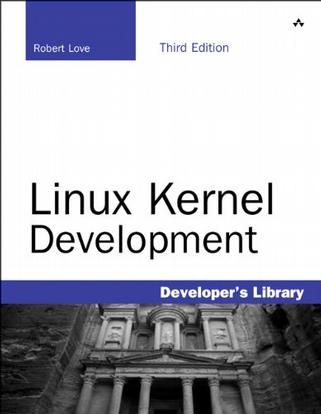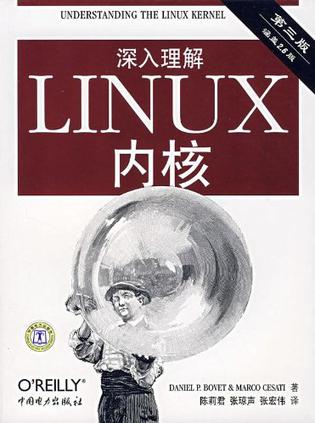-

Python在Unix和Linux系统管理中的应用
《Python在Unix和Linux系统管理中的应用(影印版)》作者们还构建了一个可以免费下载的Ubuntu虚拟机。该虚拟机包含了这《Python在Unix和Linux系统管理中的应用(影印版)》的源代码,还可以用来运行书中的实例,包括SNMP、IPython、SQLAlchemy和许多其他工具。《Python在Unix和Linux系统管理中的应用》展示了Python语言如何提供一种更加高效的方式来处理Unix和Linux服务器管理工作中的各种任务。《Python在Unix和Linux系统管理中的应用(影印版)》的每一章都会提出一个特定的管理问题,例如并发或数据备份,然后通过实际的例子提供基于Python的解决方案。你将学习使用Python开发一套属于自己的命令行工具,并用来解决一系列范围很广的问题。通过《Python在Unix和Linux系统管理中的应用(影印版)》及其辅助虚拟机,你将学习如何打包并部署Python应用程序和库文件,以及如何编写在多个Unix和Linux平台下都运行良好的代码。 通过这《Python在Unix和Linux系统管理中的应用(影印版)》,你将发现Python是怎样帮助你: ·读入文本文件并提取信息 ·使用线程和派生子进程的选项并发地运行多个任务 ·使用网络工具从一个进程传送信息到另一个进程 ·创建更易互动的可点击图形界面工具 ·通过与SNMP交互来用程序监控大型多个集群机器 ·掌握IPython的命令环境来替代或增强Bash、Korn或Z-Shell的功能 ·将云计算集成到基础架构中并编写一个基于谷歌应用程序引擎的应用 ·利用定制脚本来解决特殊的数据备份的挑战 ·使用Django、SQLAlchemy和Storm对象关系模型来与数据库交互 -

Linux Kernel Development
The third edition of the authoritative, practical introduction to the Linux kernel for programmers who want to better understand the Linux kernel and write and develop kernel code. Authored by a well-known member of the Linux kernel development team, with a reputation for a highly readable and focused writing style, this edition has been thoroughly updated and includes improved coverage of all the major subsystems and features of the latest version of the Linux 2.6.xx kernel. Linux Kernel Development details the design and implementation of the Linux kernel, presenting the content in a manner that is beneficial to those writing and developing kernel code. While the book discusses topics that are theoretical, it does so with the goal of assisting programmers so they better understand the topics and become more efficient and productive in their coding. The book discusses the major subsystems and features of the Linux kernel, including design and implementation, their purpose and goals, and their interfaces. Important computer science and operating system design details are also addressed. The book covers the Linux kernel from both angles -- theoretical and applied -- which should appeal to both types of readers. The author, a core kernel developer, shares valuable knowledge and experience on the very latest Linux kernel. Specific topics covered will include: all the important algorithms, relevant subsystems, process management, scheduling, time management and timers, system call interface, memory addressing, memory management, paging strategies, caching layers, VFS, kernel synchronization, and signals. An authoritative, practical guide that helps programmers better understand the Linux kernel, and to write and develop kernel code. * Authored by core Linux kernel developers. * In-depth coverage of all the major subsystems and features of the new Linux 2.6 kernel. * Targeted audience includes programmers interested in gaining relevant and timely information so they may further their kernel development skills. --This text refers to an out of print or unavailable edition of this title. -

Linux Kernel Development
The third edition of the authoritative, practical introduction to the Linux kernel for programmers who want to better understand the Linux kernel and write and develop kernel code. Authored by a well-known member of the Linux kernel development team, with a reputation for a highly readable and focused writing style, this edition has been thoroughly updated and includes improved coverage of all the major subsystems and features of the latest version of the Linux 2.6.xx kernel. Linux Kernel Development details the design and implementation of the Linux kernel, presenting the content in a manner that is beneficial to those writing and developing kernel code. While the book discusses topics that are theoretical, it does so with the goal of assisting programmers so they better understand the topics and become more efficient and productive in their coding. The book discusses the major subsystems and features of the Linux kernel, including design and implementation, their purpose and goals, and their interfaces. Important computer science and operating system design details are also addressed. The book covers the Linux kernel from both angles -- theoretical and applied -- which should appeal to both types of readers. The author, a core kernel developer, shares valuable knowledge and experience on the very latest Linux kernel. Specific topics covered will include: all the important algorithms, relevant subsystems, process management, scheduling, time management and timers, system call interface, memory addressing, memory management, paging strategies, caching layers, VFS, kernel synchronization, and signals. An authoritative, practical guide that helps programmers better understand the Linux kernel, and to write and develop kernel code. * Authored by core Linux kernel developers. * In-depth coverage of all the major subsystems and features of the new Linux 2.6 kernel. * Targeted audience includes programmers interested in gaining relevant and timely information so they may further their kernel development skills. --This text refers to an out of print or unavailable edition of this title. -

鸟哥的Linux私房菜
《鸟哥的Linux私房菜:服务器架设篇(第2版)》是对连续三年蝉联畅销书排行榜前10名的《Linux鸟哥私房菜一服务器架设篇》的升级版,新版本根据目前服务器与网络环境做了大幅度修订与改写。 全书共3部分,第1部分为架站前的进修专区,包括在架设服务器前必须具备的网络基础知识、Linux常用网络命令、Linux网络侦错步骤,以及服务器架站流程:第2部分为主机的简易防火措施,包括限制Linux对外连接端口、Linux自动在线升级、路由器设置、防火墙设置等各项措施,告诉您如何保护主机,并培养良好的操作习惯;第3部分为局域网与小型企业内各种常见服务器的架设,包括DHCP、NIS、Telnet、NFS、SSH、vsFTPd、SAMBA、NTP、www、Mail、DNS等,从最初的规划到实际硬盘的分区、软件版本的选择与安装,以及设置成功后的监测、维护及备份工作,都一一给出详实的分析与讲解。各章共提供200多道练习题,方便读者自我检测;还可通过“参考资料”达到能力的拓展与提高。 -

鸟哥的Linux私房菜
《鸟哥的Linux私房菜:服务器架设篇(第2版)》是对连续三年蝉联畅销书排行榜前10名的《Linux鸟哥私房菜一服务器架设篇》的升级版,新版本根据目前服务器与网络环境做了大幅度修订与改写。 全书共3部分,第1部分为架站前的进修专区,包括在架设服务器前必须具备的网络基础知识、Linux常用网络命令、Linux网络侦错步骤,以及服务器架站流程:第2部分为主机的简易防火措施,包括限制Linux对外连接端口、Linux自动在线升级、路由器设置、防火墙设置等各项措施,告诉您如何保护主机,并培养良好的操作习惯;第3部分为局域网与小型企业内各种常见服务器的架设,包括DHCP、NIS、Telnet、NFS、SSH、vsFTPd、SAMBA、NTP、www、Mail、DNS等,从最初的规划到实际硬盘的分区、软件版本的选择与安装,以及设置成功后的监测、维护及备份工作,都一一给出详实的分析与讲解。各章共提供200多道练习题,方便读者自我检测;还可通过“参考资料”达到能力的拓展与提高。 -

深入理解LINUX内核(第三版)
为了彻底理解是什么使得Linux能正常运行以及其为何能在各种不同的系统中运行良好,你需要深入研究内核最本质的部分。内核处理CPU与外界间的所有交互,并且决定哪些程序将以什么顺序共享处理器时间。它如此有效地管理有限的内存,以至成百上千的进程能高效地共享系统。它熟练地统筹数据传输,这样CPU 不用为等待速度相对较慢的硬盘而消耗比正常耗时更长的时间。 《深入理解Linux内核,第三版》指导你对内核中使用的最重要的数据结构、算法和程序设计诀窍进行一次遍历。通过对表面特性的探究,作者给那些想知道自己机器工作原理的人提供了颇有价值的见解。书中讨论了Intel特有的重要性质。相关的代码片段被逐行剖析。然而,本书涵盖的不仅仅是代码的功能,它解释了Linux以自己的方式工作的理论基础。 本书新版涵盖2.6版本,其在内核的几乎每个子系统中都有重要的变化,尤其是在内存管理和块设备领域。本书侧重于以下主题: ●内存管理,包括文件缓存、进程交换和直接内存存取(DMA) ●虚拟文件系统层和第二、第三扩展文件系统 ●进程创建和调度 ●信号、中断和设备驱动程序的主要接口 ●定时 ●内核中的同步 ●进程间通信(IPC) ●程序的执行 《深入理解Linux内核》将使你了解Linux的所有内部工作,它不仅仅是一个理论上的练习。你将学习到哪些情况下Linux性能最佳,并且你将看到,在大量的不同环境里进行进程调度、文件存取和内存管理时它如何满足提供良好的系统响应的需要。这本书将帮助你充分利用Linux系统。